Provides health and social care services. Works with people who need support with drug and alcohol use, mental health, offending behaviour, unemployment issues and people with a learning disability. England only.
Offer advice and support to people who want to cut down or stop consuming drug and alcohol and their families.
Reduces reoffending by rehabilitating offenders through training and employment; supporting homeless men through stable accommodation and opportunities for training and employment; and supporting community groups by redistributing surplus food to ensure they can feed vulnerable groups.
Provide residential, community, prison and specialist services and specialist services across the UK, offering psychosocial support to aid people on their journey of recovery.
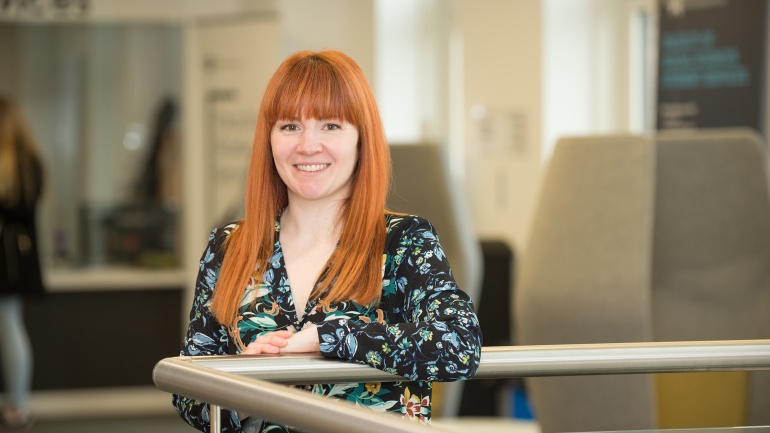
No. 10 in our blog series exploring creative approaches to transforming the criminal justice system.
Author: Laura Caulfield, researcher in forensic psychology and criminal justice
This year marks my twentieth year working as a researcher in forensic psychology and criminal justice. Reaching this milestone prompted me to reflect on my journey so far, how I got here, what I’ve learnt, and also to think about what the future might hold.
In 2001 I began my career as an academic conducting research into traditional programmes in the criminal justice system. I was applying my knowledge of psychology and research methods to measuring whether rehabilitation programmes were effective. Most of my work involved conducting quantitative analysis of large-scale datasets to ask questions like ‘do Offending Behaviour Programmes reduce risk of reoffending?’. While the research was interesting and valuable, I began to realise that there are issues with a ‘one size fits all’ approach and that some people in prisons and serving community sentences are just not ready – or not yet able – to engage with standard programmes and education.
Fast forward to 2007 and a colleague asked if I would be interested in applying the methods I used to measure accredited programmes to evaluating a music programme in prisons. I’ll admit that I felt sceptical, because I’d only ever thought about addressing formal risk factors in prisons, and it wasn’t immediately obvious to me how a music project could have an impact on prisoners. However, as a researcher, starting from a sceptical position can be a good thing and being curious is central to this line of work.
The project I’d been asked to evaluate was run by Good Vibrations and I embarked on a steep learning curve. I spent time in prisons with participants on week-long courses and I observed as groups of prisoners, many of whom were unknown to one another, came together with a Good Vibrations facilitator. I watched as over the course of a week they learnt about Gamelan, learnt how to play and compose, and at the end of the week performed a concert to peers, prison staff, and external visitors. What struck me most was not the musical skills they developed and the impressive nature of the performance, but what happened to individuals and the group as the week progressed. The research told me lots of things and the key messages were: participants developed social and communication skills, which is important to solve problems, talk things out, and reduces the risk of arguing and aggression. Participants were calmer, which is good for health and wellbeing as well as reducing violence and aggression. Participating also acted as a stepping-stone into formal programmes and education for some prisoners, through building confidence and learning that they could achieve.
Those first projects with Good Vibrations have stayed with me. I have had some really amazing experiences seeing people engage, connect, and be inspired. That research led on to working with numerous arts projects and organisations, including the Irene Taylor Trust (music), the Artist in Residence at HMP Grendon (a Therapeutic Community prison), Rideout (who work with range of creative arts, often drama-based), Birmingham Youth Offending Service music project, Sandwell Youth Offending Service (their innovative service wide creative approach), London College of Fashion and their Making for Change (fashion design & manufacturing) inititative with women in prison, and the Centre for Design Against Crime and their work redesigning cell furniture. I’ve been closely involved with the National Criminal Justice Arts Alliance (NCJAA) in the UK, and the US-based South West Correctional Arts Network (SCAN). Overall, what I’ve been working on is developing the evidence base around the arts in criminal justice and trialling robust methods.
Over the last decade, the role of the arts, culture and creativity in criminal justice has been of increasing interest to policymakers, practitioners, the criminal justice system and researchers. In 2019, the UK Department for Culture, Media, and Sport Commons Select Committee acknowledged the ‘impact of culture … on positive outcomes in health, education, criminal justice’. There is now substantial evidence of the impact of the arts in criminal justice: indeed, between the United Kingdom and the United States, there are over 160 research studies. In 2012, the NCJAA launched the Evidence Library, ‘an online library, housing the key research and evaluation documents on the impact of arts-based projects, programmes and interventions within the Criminal Justice System’. (NCJAA, 2019c). Other countries have followed the Evidence Library initiative, setting up their own resources. See, for example, the Prison Arts Resource Project, which ‘is an online library of evidence-based research into U.S. correctional arts programs’ (PARP, 2019).
My own contribution to the evidence has involved working with a variety of art forms across the prison estate, with young people serving community sentences, and with people leaving prison and re-entering the community. Most recently, and in response to some earlier criticisms of research in this area, I published a study that really sought to push the evidence base forward. Working with girls and boys taking part in a music programme run by a Youth Offending Service (YOS) and analysing data that the YOS collects, we found that children who completed the music programme were more likely than a comparison group to engage with the YOS, and showed were statistically significant improvements in well-being and musical ability over the course of the project. The children talked to us about how safe they felt, how their confidence was growing, and about the new positive relationships they had formed.
There is more to uncover and investigate but the value and impact of the arts is clear. At this point in my research journey it is my doctoral students whose work I am inspired by. One of my doctoral students has just completed research to help us understand more about some of the amazing people who deliver creative writing programmes in prison. Another is working to understand the training processes for actors working in prisons. Understanding more about creative practitioners and the relationships built in the spaces created through the arts will help us all keep learning and developing research and practice in the criminal justice system.
_______
Good Vibrations has worked in prisons and young offender institutions since 2003. We see the destructive effects on people of living within our overstretched, under-resourced criminal justice system. We want to understand how people can be better supported before, during and after their contact with the criminal justice system. We have commissioned a series of blogs from a range of experts, including those with lived experience and their families. Every Thursday for the next four months, we will bring a different voice with their own unique perspective and ideas. At the end of the series we will publish a report drawing together the themes and recommendations.
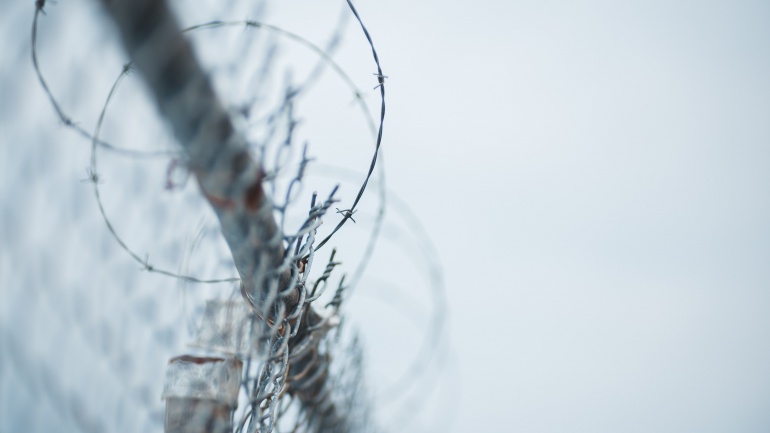
No. 9 in our blog series exploring creative approaches to transforming the criminal justice system.
Author: BL, resident at HMP Stoke Heath. During the pandemic, we sent creativity packs to prisoners to use in their cells while they were spending over 23 hours a day in solitary confinement. Amongst other things, these included an addressed envelope and a request for the recipient to write about their view on preventing crime, for us to include as a blog for this series. BL responded to this request and this is his contribution.
I feel passionate about the changes that could support the long road to crime reduction for individuals, impacting on society and communities.
However, a few simple words here and there do not provide a clear, in depth explanation of the social difficulties which we are experiencing in society. Perhaps, in order to understand how to reduce crime, certain sociological factors, such as social conflict, race, class and strata in society can be considered.
Statistics provide evidence that not all young people from deprived areas fall into crime, leading them into a countercultural existence. What is abhorrent is that labelling plays a significant role in how the identity of self is perceived in society. It is this social conflict that can impact on people and lead them into criminal activity. On the other hand, if individuals lack the power to control and influence their lives, this too may lead to criminal behaviour. Thus, criminality can become a way of achieving opportunities and transforming their lives.
Some people may argue that a capitalist society is to blame for the increase in criminality. The analysis is that it advantages a minority in society, at the expense of the majority. This in turn may lead some people within that majority to commit crime, especially if to acquire the material goods that the capitalist economy generates.
This is a well-documented stance. Yes, as consumers, we are bombarded with a wide range of expensive and exotic goods that the everyday person can ill afford. This in itself causes divisions in crime: white collar crime and blue collar crime. Until these inequalities are addressed – say for a multi-national corporation polluting waterways compared to the working class person committing a crime – greater social bias and labelling of individuals will exist. Corporations are rarely portrayed as a ‘person’, paying fines rather than serving prison sentences.
Perhaps empowering those in socially deprived areas may be one method of reducing crime. Re-installing community centres, which were phased out in the late 80s, would provide the younger generations with the opportunity to develop. Yes, there are inner-city programmes. However, there is often a process of gentrification, which provides growth on the one hand, but fails to provide communities the opportunity to develop their own areas themselves. It may still be seen to be ordering and controlling people’s lives.
Investing in prisoners who have genuinely turned their lives around, or those on the fringes of social exclusion, is a better alternative to the cyclical nature of the prison door. Deviant behaviour is expensive on society, creates victims, in addition to pressures on valuable resources. This is an opportunity to grow, to change the very perspective which embodies crime reduction.
_______
Good Vibrations has worked in prisons and young offender institutions since 2003. We see the destructive effects on people of living within our overstretched, under-resourced criminal justice system. We want to understand how people can be better supported before, during and after their contact with the criminal justice system. We have commissioned a series of blogs from a range of experts, including those with lived experience and their families. Every Thursday for the next four months, we will bring a different voice with their own unique perspective and ideas. At the end of the series we will publish a report drawing together the themes and recommendations.
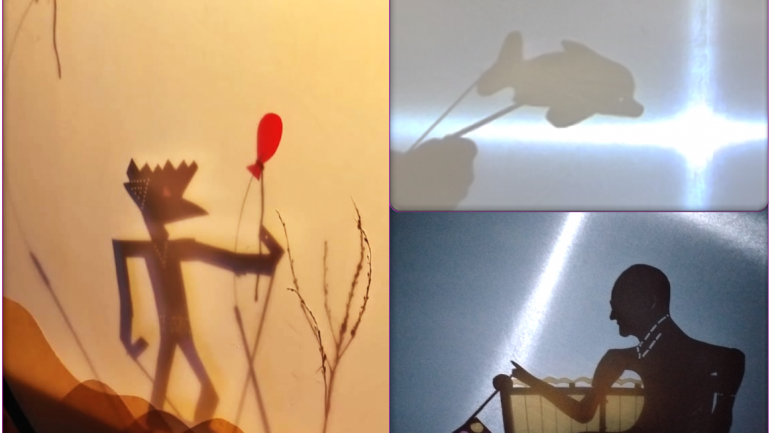
On the evening of 21st May, Good Vibrations hosted the film premiere of Beyond Performance, within an intimate, online event attended by the artists who created it, plus an invited audience.
The film combines an eclectic mix of shadow puppetry and music. It was created collaboratively through an online project run by director Sarah Stuchfield, professional artists, and old and new Good Vibrations participants across the UK. It was funded by Arts Council England.
Although there is no set narrative to the film, the group created shadow puppet clips with the suggestion of what they would like to do, or where they would like to be, after the pandemic -the result being a powerful and aspirational film.
During the post-premiere Q&A session, audience members and the artists involved fed-back:
“The filming, puppetry and music were lovely – just wonderful.”
“Really rich. Would want to see it again. Love the colours. There was a warmth – of ‘Balloon Love’, of ‘Unstuck’, of the anchor, of ‘Triangle Man’, and the bat – I love the bat finding light. Really beautiful. Loved it!”
“A super combination of music and puppeteering… Lovely characterisation both in appearance and movement.”
“It had an intense vibe. I got a sense of longing and of aliveness about it.”
““It was an amazing kit we got in the post to make the puppets. Taking part got me off Netflix – crafting and playing. A lovely experience.”
“It got us well away from our current times.”
“We’ve all been locked in, but by doing this we’ve been allowed out. I’m looking forward to what people create next now that they’ve got the equipment and the skills.”
You can watch it on our YouTube channel
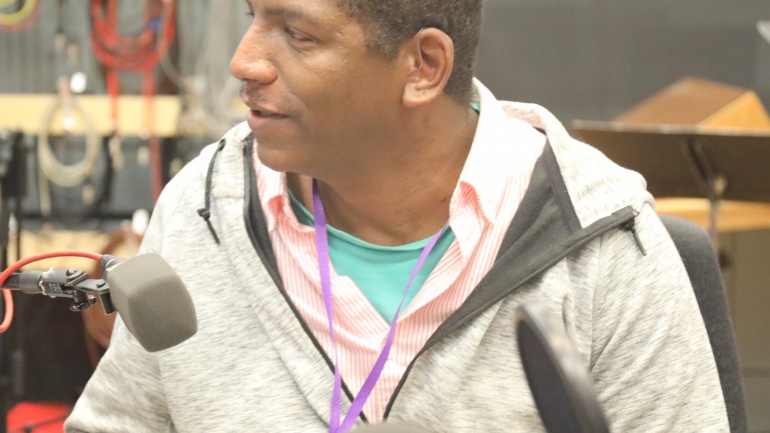
No. 8 in our blog series exploring creative approaches to transforming the criminal justice system.
Author: Russ Haynes, radio show host and Good Vibrations past participant
I often wonder what the purpose of putting someone in prison is. The answer may appear obvious – punishment. Is it to teach someone a lesson? If so, then surely when a sentence is finished, you are a reformed person and good to go on your way. But in the UK we have a high reoffending rate. About 29% of people who are released from prison will reoffend within the first year. So where are we going wrong as a society?
I’ve heard people say prison isn’t tough enough. That it is like a hotel room. If your hotel room is like prison then you’re staying at a no star reviewed place and you definitely need to book another hotel. I served one year in prison. When it came to an end, I was left wondering what on earth it was all about. I know I did wrong. I accepted that. But I was confused about what I was supposed to get out of it.
One of the hardest things was the boredom. I developed a routine that I stuck to throughout my sentence. I read the newspaper slowly in the morning. Then, the afternoon I spent reading a book and watching a bit of TV. In between I did the prison work. It helped speed up the waiting time.
I also learned to protect myself and not allow feelings to be felt. I hid behind a brick wall in my mind to cope with the situation. I did my best not to be noticed by the people around me. I didn’t trust anyone. When I left prison, I kept that wall up. It was hard to break down and I didn’t know how. It was my way of coping, not allowing myself to get hurt, and because of that it was hard to feel love for my partner or my daughter.
I tried to navigate this new chapter in my life, but was struggling to carry on. My confidence and self-esteem were shattered and everything I had ever known had ended – my career, friends, hope and ambition. I take no sympathy for how I ended up in the situation. The fault was purely mine. Even though I had a partner and child waiting for me, I was lost and had no idea what I had to offer this world. My mind rushed with negative thoughts.
I really tried to adjust, but my life had changed forever. No matter how hard I tried to move on and create a new path for myself, the system stopped me at every turn, and made it as difficult as possible for me. Despite all the negative feelings I had about myself, I wanted to work and create a new life for me and my family, but there was always something blocking my way forward.
The criminal justice system doesn’t seem to be set up for people who want to learn from their mistakes and use the experience for growth and personal development. It is more focussed on punishment than on promoting rehabilitation. Any talk of redemption was met with scepticism and distrust. I was exhausted by all the hoops I had to jump through and hurdles I had to avoid just to get a job, make decisions, or be with my family.
I had loads of ideas to create my own business. However, the rules I had to follow held me back and prevented me from achieving that. Within months my ambition had faded and I had given up. I saw no future. I was tired of trying to be positive, and I fell into depression and anxiety. My mistrust grew of everyone around me. I hated my situation and I hated myself. Alone, and feeling I had no support, I took an attempt on my life to be free from the pain.
Luckily, I was found and rushed to the hospital. I was sectioned, which ironically gave me the break I needed. I used this time to calm down, reassess my situation and create a new plan for going forward.
Prison shouldn’t break you. It should give you the time to revaluate, and inspire you to make positive choices that benefit you and the society you live in. It should offer guidance, advice and motivation to succeed when you leave, so you will want to make a better version of yourself. But prison left me angry, resentful and suspicious. It bred negativity, stripped me of my self-worth and brought my worst traits to the forefront.
How can we make the criminal justice system about rehabilitation instead?
We need to have experienced people from all backgrounds – including those who have lived in prison – working together on reforming the system to make it more effective. As long as decisions are solely made by people who have never had experience of committing a crime, hitting rock bottom, or anything that can relate to why people commit crime, things will never improve.
We need to make the court process more human. The traditions of the courtroom, including the gowns and wigs, are simply alienating to someone who is about to lose their liberty. We need to be more sensitive to people’s emotional and mental wellbeing when deciding what a suitable sentence is for them.
We need to push arts in education, not just academic achievement. That will allow creative expression and a useful outlet for those inside. We need to create more opportunities for people whilst they are inside that give them the skills and mind frame to help them move forward when they leave. We need to hire prison officers and staff who are committed to rehabilitation.
We mustn’t use family visiting times as a weapon to make people behave. We need to realise the importance families play in encouraging rehabilitation and the damage it causes children when we prevent them from seeing their parents. We need to create better family visit areas in prisons that don’t leave children traumatised.
We need to stop punishing people after they’ve left prison, and stop setting impossible tasks for them to follow and putting out traps to get them back in. We need to fine companies who use someone’s past to remove them from employment, and reward companies that actively seek to employ those with a criminal background. I’m in favour of abolishing the criminal record. I feel it only serves the purpose of labelling people and allowing them to legally be discriminated against.
As long as someone does not pose a realistic ongoing risk, once their sentence has been completed then that should be it. They should be able to move on without any prejudice. That would inspire and encourage those who find themselves within the system to work their way out of it and become valued members of society.
It has been over 12 years since I finished my sentence and I’m still finding it difficult to move on. I have no trust in the system and think it is one of the UK biggest failures. That and the Covid response and also possibly Greggs.
_______
Good Vibrations has worked in prisons and young offender institutions since 2003. We see the destructive effects on people of living within our overstretched, under-resourced criminal justice system. We want to understand how people can be better supported before, during and after their contact with the criminal justice system. We have commissioned a series of blogs from a range of experts, including those with lived experience and their families. Every Thursday for the next four months, we will bring a different voice with their own unique perspective and ideas. At the end of the series we will publish a report drawing together the themes and recommendations.
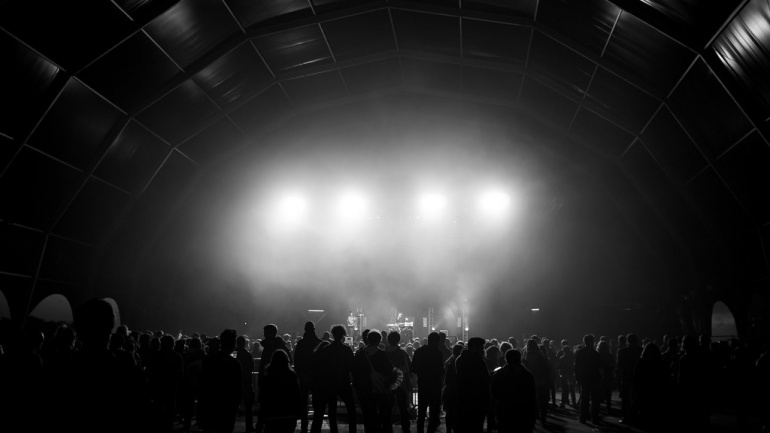
Alan talks to three Glasgow based artists about being musicians and asks the question – can anyone become a musician and get up on stage to perform?
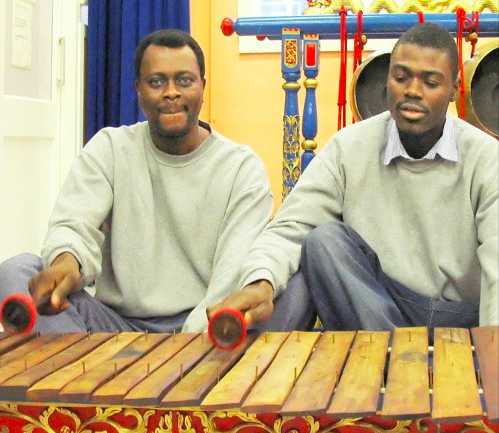
Russ and Sam speak to Chris Atkins, about being separated from his son while in prison, and Sharon Berry, founder of charity Storybook Dads, about how their work supports fathers maintain or establish relationships with children.